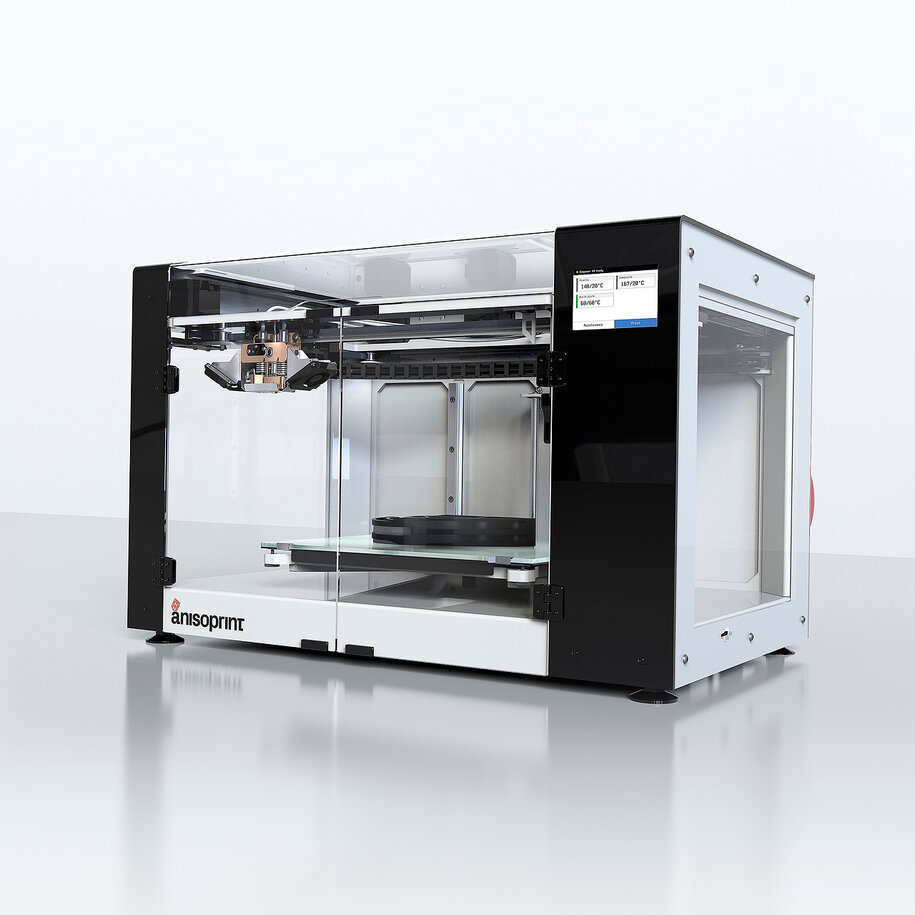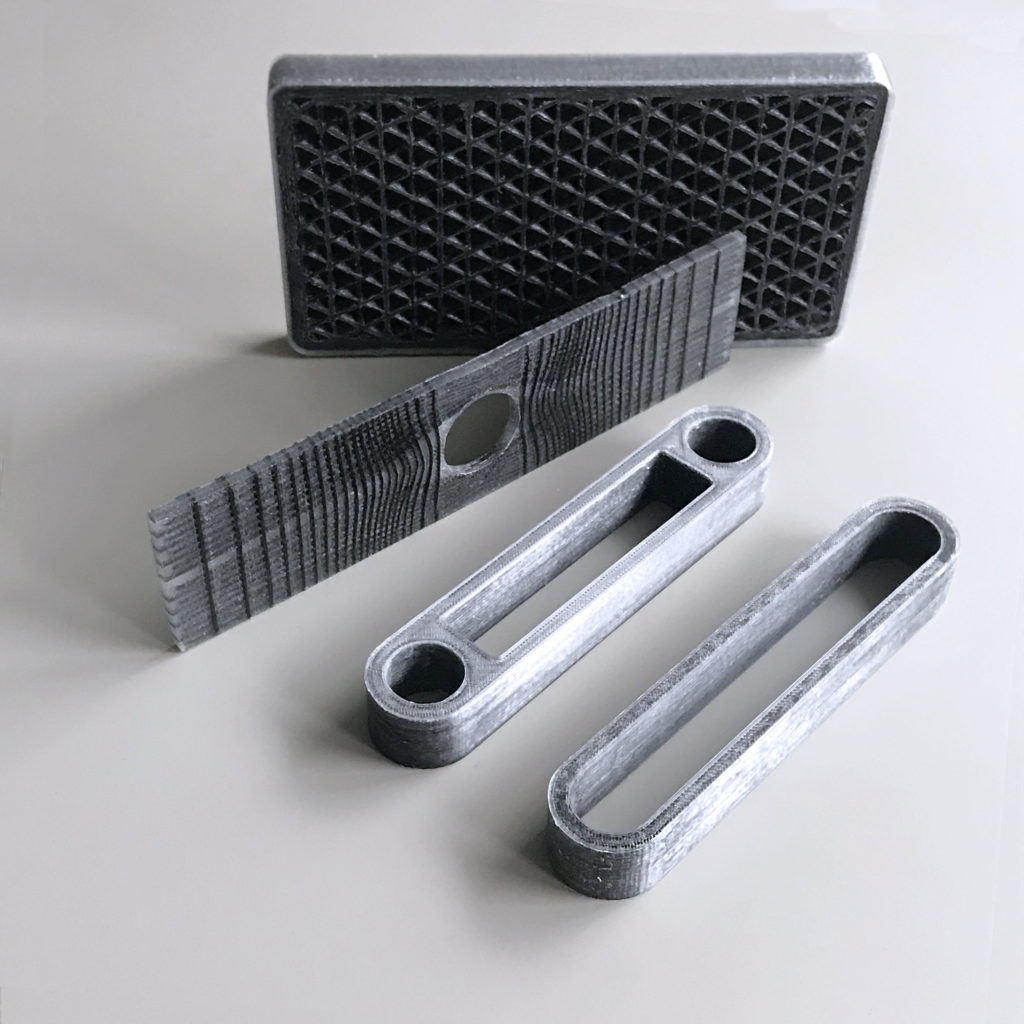With only a handful of companies offering composite 3D printing solutions, many industrials are still questioning the capabilities of composite 3D printing in manufacturing.
We recently reached out to Anisoprint’s CEO & founder Fedor Antonov, as part of an exclusive feature to discuss those things that make this manufacturing process a good candidate for production.
With a decade of academic and industrial experience in design and optimization of composite materials and structures, Antonov is uniquely positioned to clarify all grey areas around this technology.
How would you explain the fact that composite 3D Printing is less widespread than other types of AM technologies?
Composite 3D printing is one of the youngest branches of AM technologies. It is just very new, that’s the only reason. With every year, we can see new players entering the market and number of applications and use cases is growing rapidly. I’m pretty sure that in 5-10 years composite 3D printing will be one of the biggest things in AM.
How does the use of composites differ from conventional manufacturing processes & additive manufacturing processes?
There is not just one conventional composite manufacturing process. And most of them are also additive by definition (the materials is added to create an object, not removed). Moreover, Automated Fiber Placement (AFP) or Tape Laying (ATL) technologies , that are used successfully for decades to produce high performance composite parts, could be called 3D printing. Some of the new composite 3D-printing companies are offering technologies that are very similar to AFP or ATL, and some of the old AFP/ATL providers now start calling their machines 3D printers. There are other composite manufacturing technologies, such as hand layup, filament winding, pultrusion, resin transfer molding and many others, that are quite different one from another, but all of them are additive. What really makes the difference, is not the fact that these technologies are additive, but rather higher level of automation, digitalization and customization of the manufacturing process. Most of the conventional technologies are multi-stage processes that require lot of hand and paper work, and have many limitations.
The ideal composite manufacturing technology of the future (anisoprinting) is a fully automated, single-stage, digital manufacturing process, that imposes no limitations on the shape and internal structure of the part.
What AM technologies can process composite materials?
Composite materials require special approach, so existing technologies, that were not developed for manufacturing composites, can’t process them (with an exception of particle or short fiber reinforce composites, that, in our point of view, should not be considered, as they don’t offer a different value proposition). Most of the composite AM are material extrusion based, or lamination based. At the moment it’s quite hard to categorize them, as every vendor has it’s own process, each of which has its pros and cons.
Does “continuous fiber 3D printing” necessarily require two nozzles in the 3D printer? How does your technology differ from others of the same range?
No. There is only one nozzle needed to print composites. I’ve never heard actually of the technology that uses two nozzles to print composites. What makes our technology outstanding is that it is based on the co-extrusion process.
So it has one nozzle, but two inputs: one input is for reinforcing material (fiber) and another one is for the matrix material (plastic). The two materials are mixed inside the print head and are extruded through a single nozzle. In most of the other extrusion-based continuous fiber 3D printing processes, the fiber is prelimanry impregnated with plastic, and the print head has one input (for fiber, impregnated with plastic) and one output (for the same, but plastic molten inside). The co-extrusion approach allows us to use different types of plastics as a matrix (binder) material, and this choice is made at the customer side, which is not possible with the pre-impregnation approach. And most importantly, with co-extrusion you can locally change the volume fraction of the fiber, that allows to print more complex structures such as lattices or using layers with variable thicknesses.

Carbon fiber remains the most-used material in Composite 3D printing. Why?
It is very simple. Carbon fiber is the most high performance. As the main UVP of composite 3D printing is high performance (high strength, stiffness and low weight) it is logical to use the most high performance components. When the price topics will become more important with the maturity of the technology, probably, other types of fibers (such as glass, basalt, aramid or natural fibers) will become more popular, but everyone will find it’s own niche.
Lastly, how do we know composite 3D printing should be leveraged for a specific production application?

Also very simple. The key feature of composites is high performance and lightweight. So if there is a need in lightweighting – normally, if there is something flying, or moving very fast, or people have to carry it – lightweighing is important. In many cases, you can make different parts with different materials, and they will do their job. The question here is if it is optimal to use this or that material for the purpose. Optimality can be expressed in cost, production cycle, weight, or anything else. In the cases where weight is most important, composites are indispensable. Due to their directional nature (anisotropy), composites bring much more freedom for optimization. With non-directional (isotropic) metals, you can only optimize the shape of the part, while using composites, both the shape and the internal structure could be optimized.
We have been covering Anisoprint for a few years now, but 2020 revealed a new dynamics for the Anisoprint team and their ability to achieve tremendous results amid the crisis.
Remember, you can post free of charge job opportunities in the AM Industry on 3D ADEPT Media or look for a job via our job board. Make sure to follow us on our social networks and subscribe to our weekly newsletter : Facebook, Twitter, LinkedIn & Instagram ! If you want to be featured in the next issue of our digital magazine or if you hear a story that needs to be heard, make sure to send it to contact@3dadept.com






